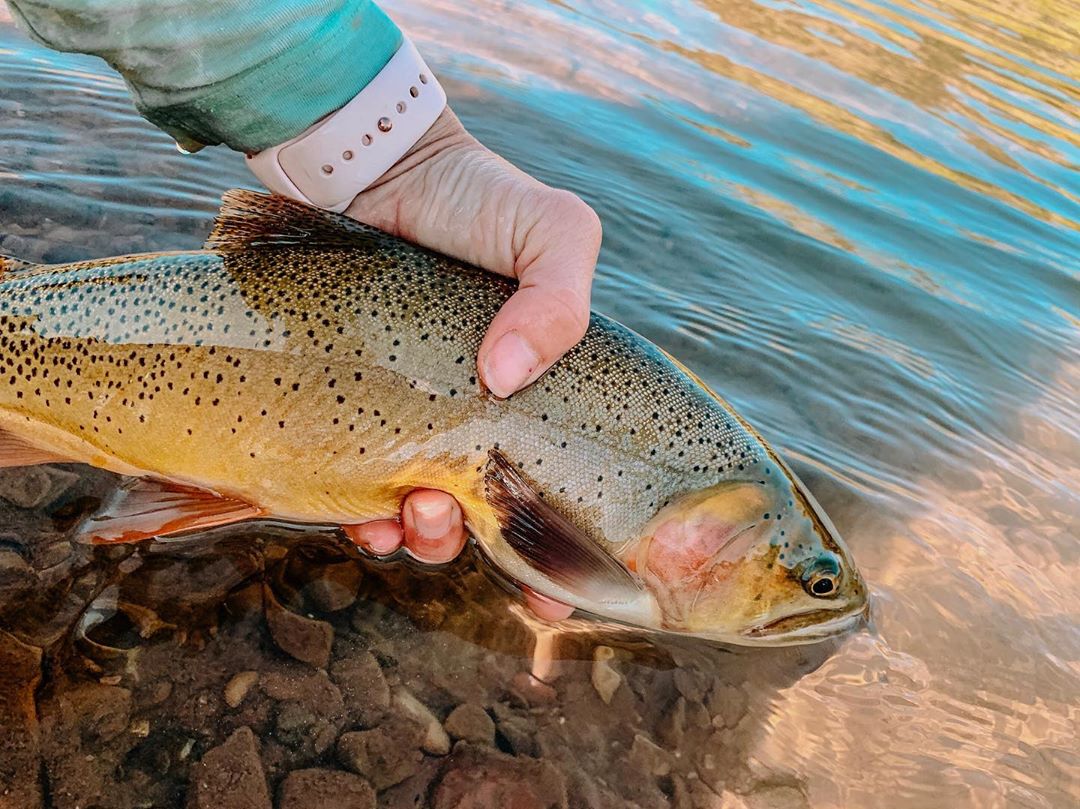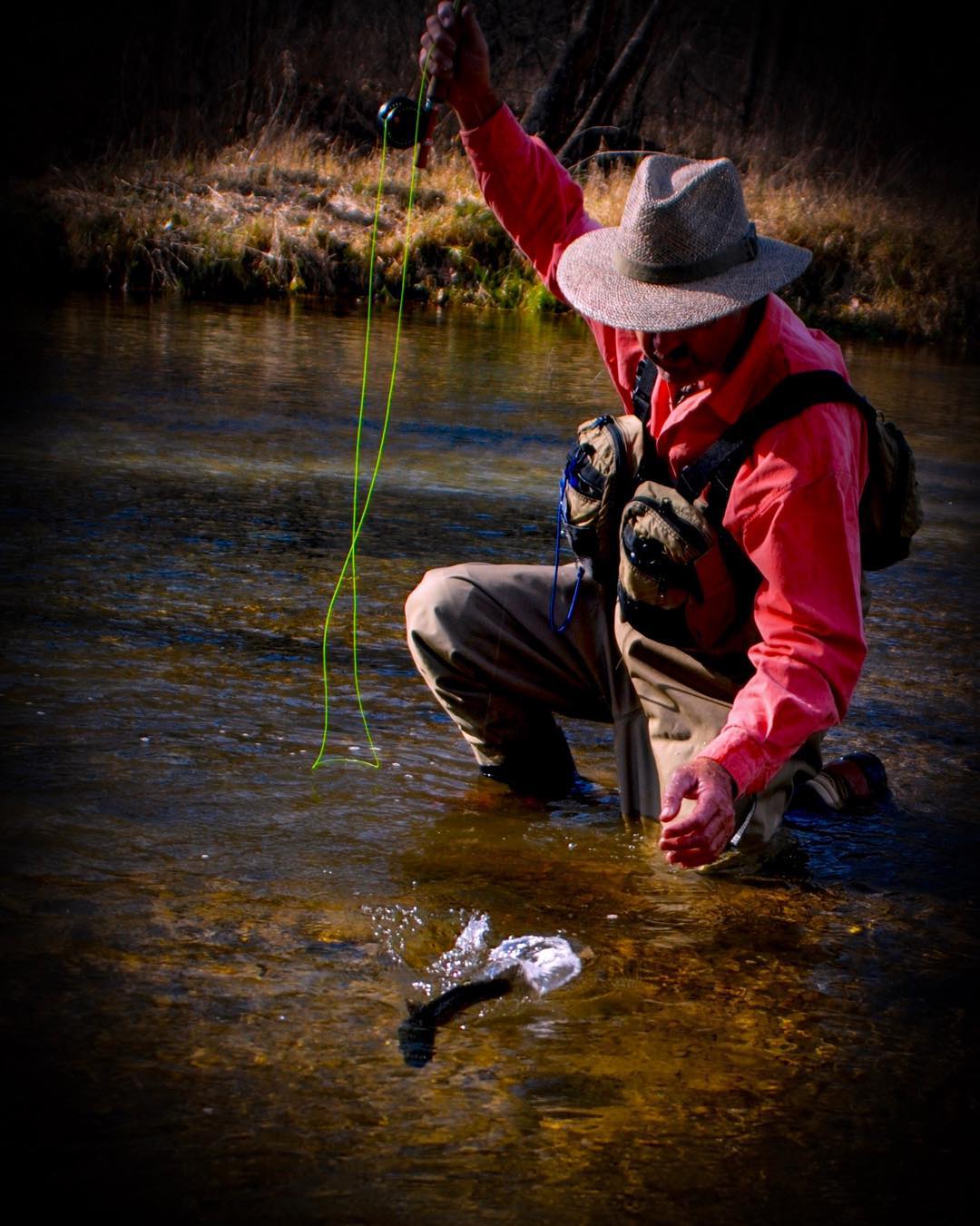It’s probably safe to say that no one knows it all–about fly fishing for trout that is. More books are written on the subject of fishing than any other subject. Sometimes it seems that what is new is old and what is old is new when it comes to strategies and tactics. One thing is for sure, there have always been a few simple and basic concepts that can help you improve your fishing. They are not new ideas–just ones that can make a difference.
Ten Minutes of Research
How much time you spend doing some basic, on-stream research before you fish is in direct proportion to how productive you’ll be. In ten minutes, you’ll be able to learn what’s happening in the river, above and below the surface. Checking water flow, clarity, temperature, subsurface and surface activity, as well as the potential effects of the current weather pattern, and stream structure, are critical to success. The tools you’ll need are a stream thermometer, binoculars (to note surface activity without disturbing the water or trout), and a basic seine net (to capture surface/subsurface bugs). I always carry a small notebook (in a waterproof zip-lock bag) to record my initial findings, including the date, time, and location. Some up-front research is always worth the effort.
Approach Is Everything

It never ceases to amaze me how many anglers walk through a stream with no regard for a quiet approach. A careful, stealthy approach to the water is a basic tenant to fishing success. One way to ensure a stealthy approach is by working the water in stages. In most instances, start your fishing at the point you enter the water at the shoreline. Then slowly and quietly start fishing the water until you reach your designated “spot”. I’ve been surprised more than once by catching some nice trout in water that most would have said was too shallow and unproductive. Start slow and wade carefully. It can make a difference.
Three Is Never A Crowd
For fishing subsurface flies, like wets and nymphs, a three-fly dropper can’t be beaten. Why fish with one fly when you can greatly increase your chances of catching trout by adding a few more flies? It’s also one of the most efficient ways of finding out what the trout want to eat. Start with a nymph pattern as the bottom fly and add the next dropper fly pattern about 18 inches from your lead nymph. Add the third wet-fly about 12 inches above the middle fly.
Night Is Right
Want to catch some really large trout? Nighttime fishing is your ticket to some great action. This is especially true as the days get longer and the weather warmer. Nighttime trout are a little less wary and interested in only one thing: food. Careful and quiet wading are the rules of the engagement. It’s that time well after sunset that I like to fish a big pattern, like a Royal Wulff tied in a 6 or 8 sized hook. Also, make sure you cover the water thoroughly, including the normally ‘dormant’ shallow water. Nighttime trout, particularly the browns, like to cruise around water they would normally touch during the daylight hours.
Get Wet, After The Hatch

One of the most productive times to use a wet-fly is just after a hatch. There are many times that the trout will continue feeding below the surface immediately after the surface action is gone. Again, a two or three-fly dropper combination is deadly.
Your Fly Is Broke
One of the biggest reasons most anglers lose a nice fish is due to neglect. Check your leader and your fly to ensure that the knot is strong and that there are no nicks on the line. As a rule, I check my fly and leader every other cast, without fail. If you find any wind knots, nicks, or anything else that could cause a trout to weaken the leader and break off, change the leader. Check your fly to make sure the hook tip is not broken and that the fly is still fishable.
Check Before Leaving
If at all possible, find out what the conditions are on your destination stream or lake before you go. Weather patterns can vary greatly, even if you are still near ‘local’ waters. The weather pattern in the higher elevations can change quickly compared to lower elevations or valleys. This website is probably the best source of stream and river information you’ll find. If you know someone in the area, call them. If all else fails, call a local tackle shop. A small amount of time invested upfront can save you lots of wasted fishing time later.
Change Tactics, Not Flies

Old habits die hard and this habit is the toughest to break. On the surface, it all seems to make sense. If you have no takers, try another fly (or better yet, fish a three-fly dropper!). There are plenty of occasions, however, when simply changing the speed of the retrieve can make a difference using the same fly (we’re talking wet flies or nymphs here). Twitching the fly as it moves downstream will sometimes trigger a response from trout. Next time, consider changing your tactics before changing your fly.
Polarize Your World
Wearing polarized sunglasses on bright days can really help your fishing. If you already wear polarized sunglasses, you’re on the right track. If you don’t, then you’d better consider it. Not only do they cut down on the glare but they allow you to see fish and fish structure. Being able to see structure in the water will allow you to determine the best fishing strategy.
Think Like A Trout
On a hot day in July, at about high noon, would you seek cover by sitting directly in the sunlight? I didn’t think so either. Would you run around like a nut for every little piece of food you could find? No. Instead, you and I go down the grocery store where it’s air-conditioned for our comfort and the food is within easy reach. Thinking like a trout means putting yourself in the trout’s ‘shoes’. Trout like to move into spots where the food is easy picking and the temperature is comfortable. They don’t like to chase after a morsel if it means wasting a lot of energy. Neither would you. Think like a trout and fish with confidence. Before you fish the next stretch of water, ask yourself, “If I were a trout, where would I hide or eat?”.






